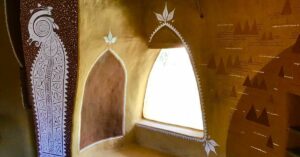‘Saving Rs 15 Lakh, I Built My Eco-Friendly House Using Mud & Recycled Waste’
Shukoor Manapat from Kerala built an eco-friendly mud house that is termite-proof and can last for over a hundred years.
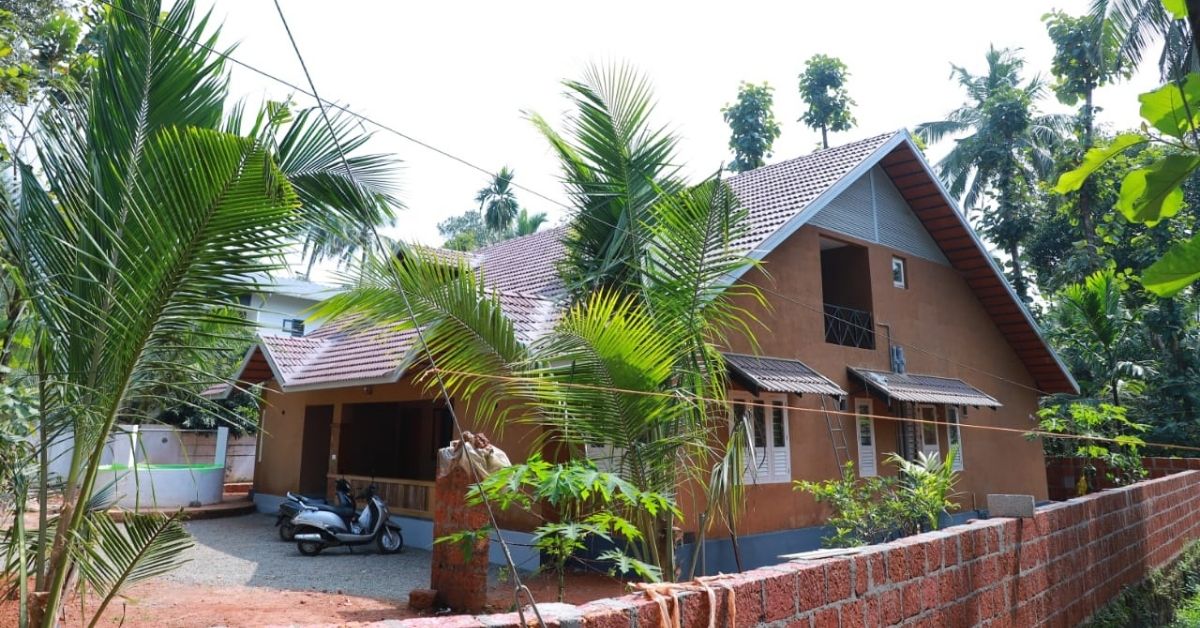
People called Shukoor Manapat ‘Mad man’ when he decided to construct a mud house in 2013. Even his wife and parents objected to living in a house that was made without cement or concrete.
‘It will not be durable, heavy rains will destroy your house and it will be a far cry from the modern construction palette that the rest of India is using,’ was some of the harsh feedback.
Paying no heed to anyone, Shukoor, an architect by profession, drew the designs of his house and began accumulating a sustainable palette.
Made from mud and recycled materials, the one-storey house christened as ‘Adobe’ can last for over a hundred years and is termite-proof.
Shukoor used the Stabilised Compressed Interlocking Earth Block (SCEB) technology in which the final compressed blocks have high structural strength and water resistance.
“The idea was to use minimum concrete and maximum mud. It is not only easily available but also a renewable source. Our ancestors have used mud for so many structures that stand tall even today. I addressed the issue of heavy rains by putting a pitched roof structure. The roofs extend up to 60 centimetres to each side of the structure unlike the usual shading of 0.5-07 metres. The rainwater will slide away without disturbing the house,” Shukoor tells The Better India.

He also used lime powder and adhesive from the Ailanthus triphysa tree (locally known as Matti Maram) to stabilise the structure and make it durable.
To ensure the house is termite-proof, given that mud easily attracts insects, he used Terminalia chebula (locally known as Kadukka) and fenugreek seeds. It is a traditional mixture that was used in ancient houses.
Concrete is only plastered in a small portion of the house to install solar panels and water tanks.
A major benefit of using mud, says Shukoor, is achieving a moderate temperature inside the house. “Mud walls are naturally insulated which means during soaring summers, the inside temperature is lower, while in winters, the mud walls comfort you with their warmth. We barely use fans or AC and save money on bills.”
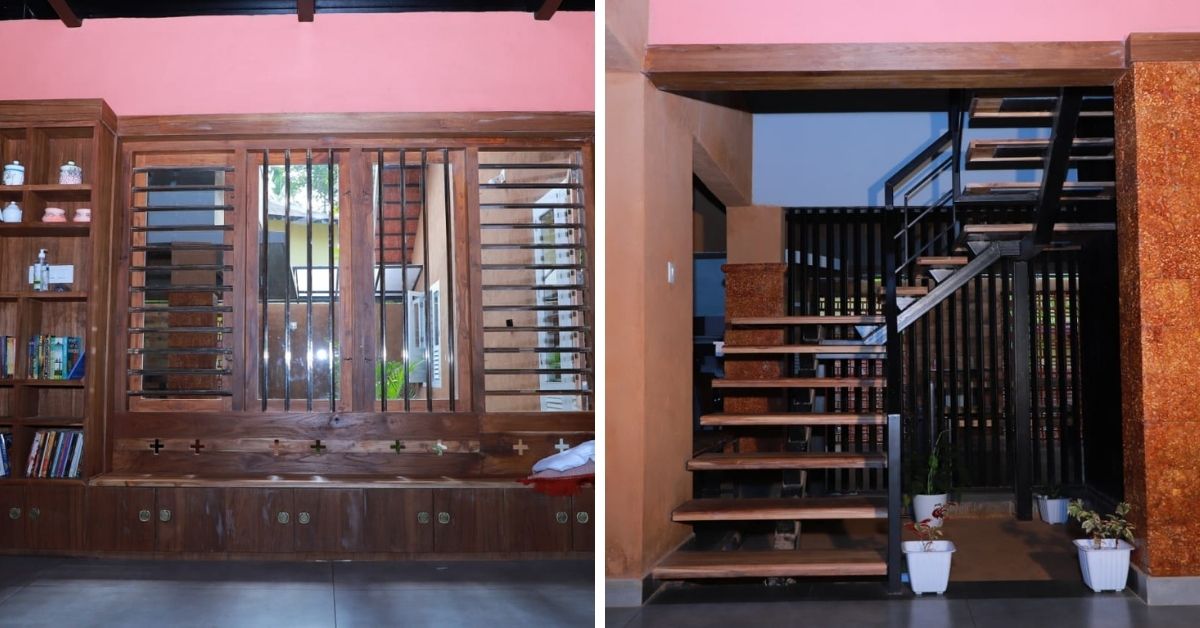
Other benefits include saving transportation costs since it is locally available and thus minimises carbon footprints. When dismantled, mud houses are recyclable or reusable. “If my son ever needs to rebuild the house or modify it, the debris can be reused completely,” he adds.
Besides the mud, Shukoor has used other passive cooling designs like large openings and jaalis to keep the house naturally insulated and illuminated.
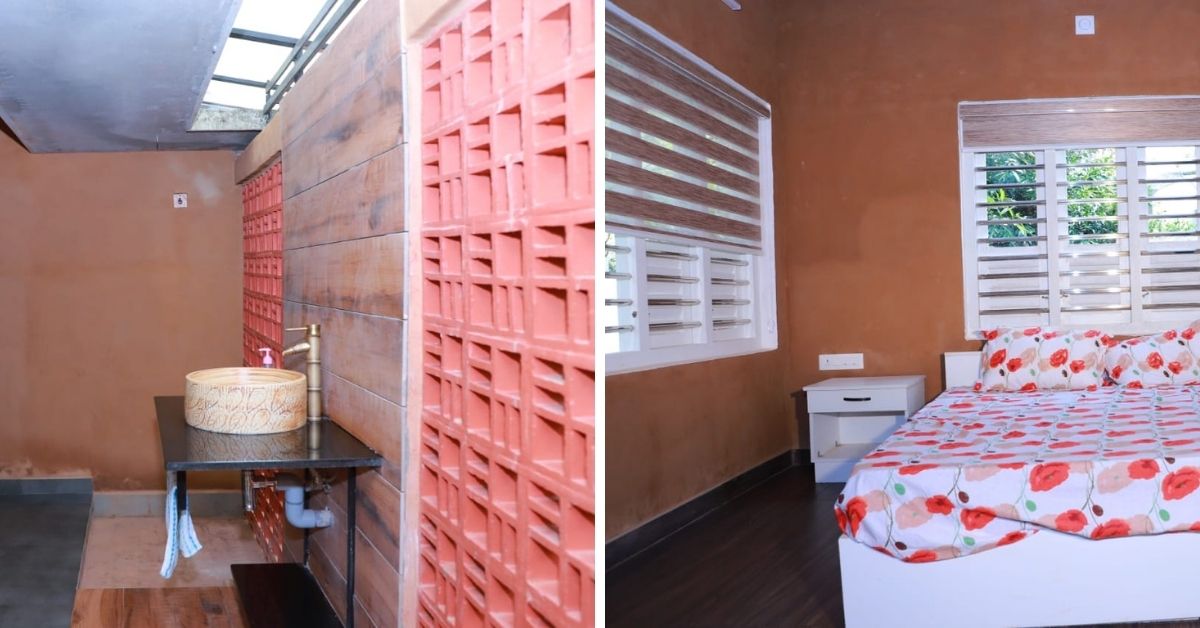
“Our open courtyard is the main attraction of the house and all the rooms open to the courtyard. We have placed indoor and outdoor plants in the area to make it greener. Our dining area has no walls. The doors and windows also have large openings allowing ample air and sunlight inside. Meanwhile, the jaalis near the staircase and above the hall look aesthetically beautiful while providing sufficient light,” says Shukoor.
Shukoor has recycled Mangalorean tiles from old demolished houses, and steel rafters too are repurposed for his rooftop.
Due to the adoption of eco-friendly methods and construction materials, the cost of construction was reduced by 30 per cent.
“I have constructed some 25 houses for my clients and the average cost to build a house like mine would be Rs 55 lakh but I built it in Rs 40 lakh,” he claims.
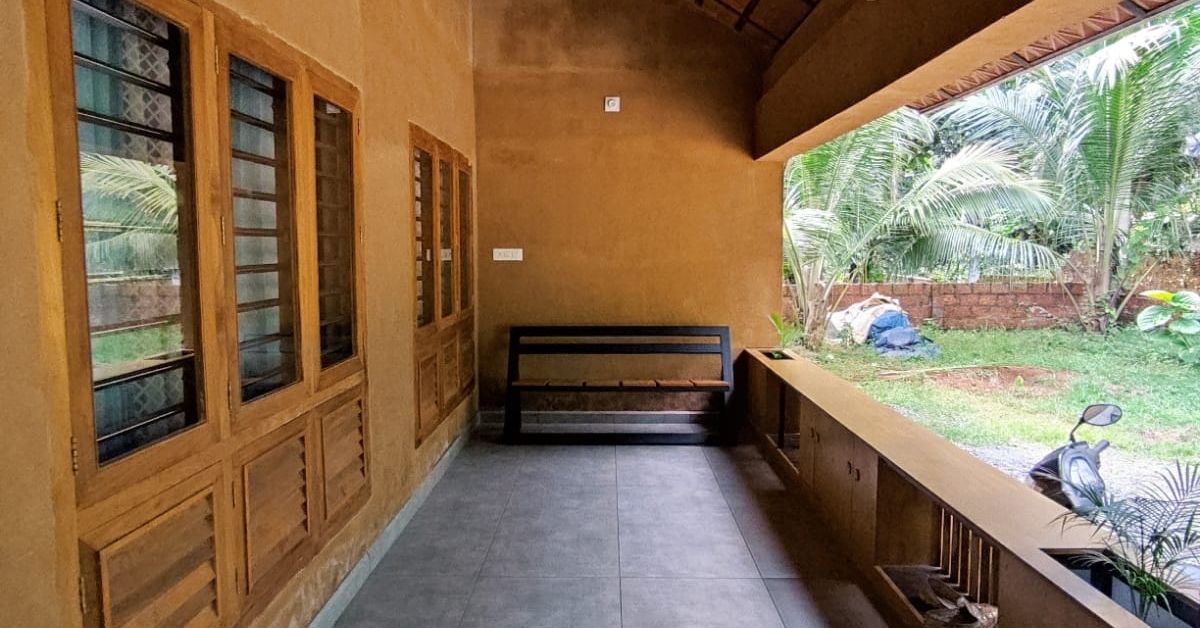
As part of his maintenance costs too, Shukoor hopes to bring them down soon by installing solar panels and rainwater harvesting structures.
“After building this sustainable house, we want to adopt a sustainable lifestyle too. For the same, we will install biogas, which will reuse kitchen waste to produce cooking gas. My wife has already started planting organic vegetables on our premises. When I was growing up, the Chaliyar river flowed next to my house. Gradually, it was degraded due to the extraction of sand. That hurt me and became my motivation to build this house,” adds Shukoor.
(Edited by Yoshita Rao)
If you found our stories insightful, informative, or even just enjoyable, we invite you to consider making a voluntary payment to support the work we do at The Better India. Your contribution helps us continue producing quality content that educates, inspires, and drives positive change.
Choose one of the payment options below for your contribution-
By paying for the stories you value, you directly contribute to sustaining our efforts focused on making a difference in the world. Together, let's ensure that impactful stories continue to be told and shared, enriching lives and communities alike.
Thank you for your support. Here are some frequently asked questions you might find helpful to know why you are contributing?


This story made me
-
97
-
121
-
89
-
167




